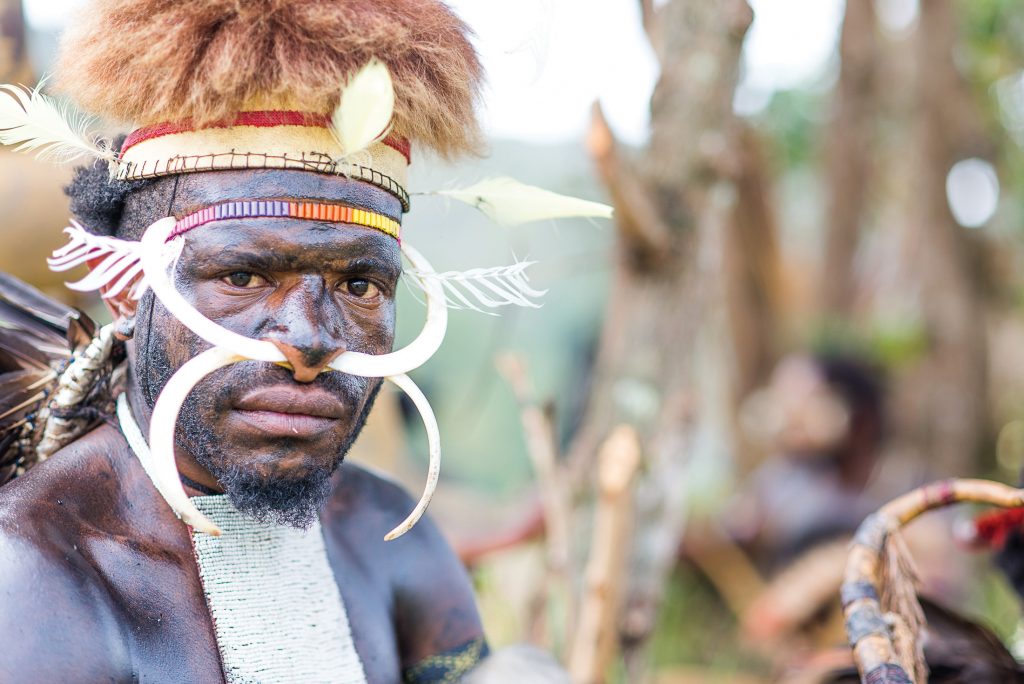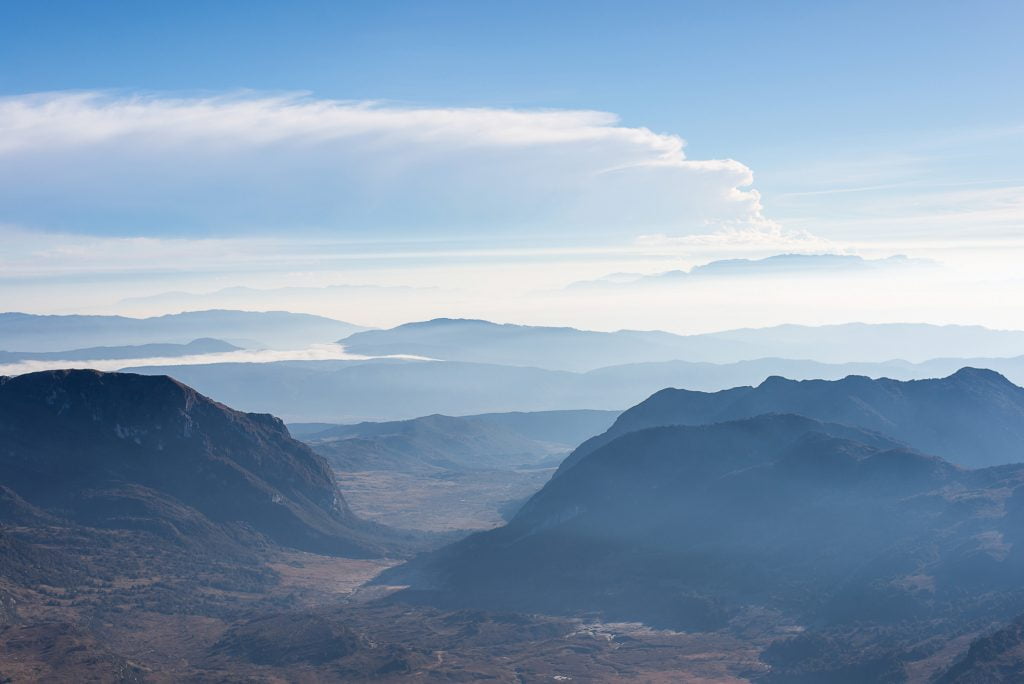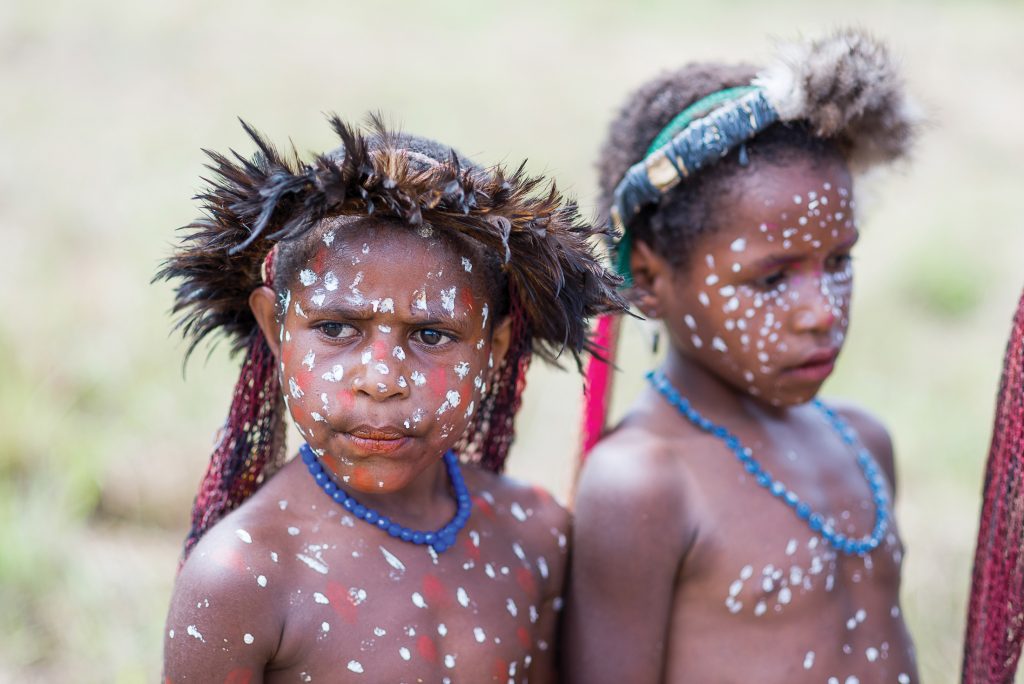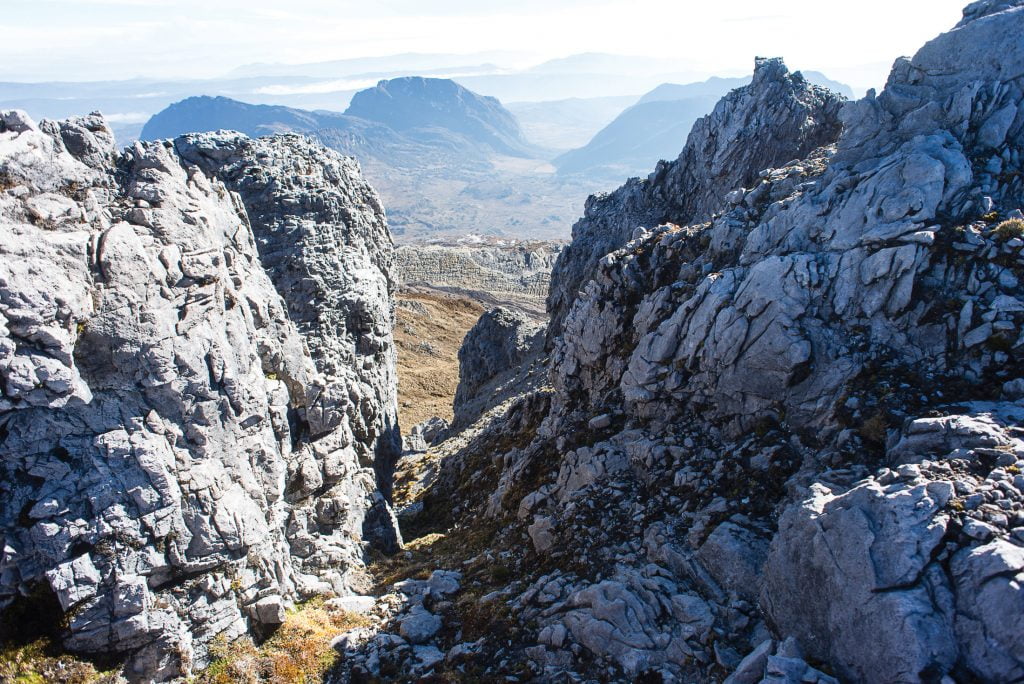Tatyana Kildisheva goes in search of adventure in West Papua.

Surely you’ve been to Indonesia. Most likely it was a Bali visit, or temple-hunting in Yogyakarta, or maybe a paradise island beach resort? However, there is another part of Indonesia, which is not often visited by tourists: West Papua. The island, which became Indonesian territory in the late ‘60s, still has ongoing conflict between its indigenous population and the Indonesian government and its settlers. Because of this in-fighting, it’s important that you get a trusted guide if visiting the region – but don’t let that put you off exploring this part of the world.
I have always wanted to visit Papua to see the indigenous tribes and to climb Mount Trikora (the second highest peak in Australasia), but it took a while to find partners adventurous enough to embark on this challenging journey. Eventually we succeeded and our small expedition included myself, my partner John and our fearless friends, Susanne and Thomas.
Looking at the map, Papua appeared to be only a stone’s throw from Singapore – in fact there were no international direct routes. Four flights and 30 hours after leaving Singapore, our small propeller plane landed in Wamena, the largest town in Baliem Valley.
Knowing close to nothing about Papua before going there, we quickly absorbed information from our Indonesian guide Nanang Link Sunarko (who had lived in Wamena for 16 years), and from simply observing the people and our surroundings.
There are over 300 indigenous Papuan ethnic groups living in the valley (the most prominent of which are the Dani, Lani and Yali), and every August they stop their tribal wars and get together in Wamena for a festival.
While there are quite a few problems with the local population including violence, substance abuse and high rates of HIV, watching the tribal festival unfold was quite a spectacle. There was dancing, never-seen-before musical instruments, concerts, singing, and mock warfare. Villagers showed up in their tribal attire, adorned with conch and bead necklaces, plant fibre skirts, animal tusks and teeth, bird feathers, and koteka (penis gourds). Their faces and bodies were daubed with paint, and they were carrying spears, bows and arrows. Needless to say it all looked super exotic to us and was huge fun to photograph.

After two days of the festival, we left Wamena and trekked through the mountains, staying with locals in their wooden huts with roofs made from long grass. We witnessed traditional ways of living off the land, like cultivating sweet potatoes and raising pigs. We saw the way a huge meal was prepared for the whole village with the pork and potatoes cooked in a hole in the ground. The ditch was laid with sizzling hot rocks, covered with grass, then layers of potatoes, pork and edible grass with more hot rocks on top. After a couple of hours the rocks were removed and the meal was ready for everyone to dig into. There was no need for cutlery and plates; it was just our hands and leaves.
As we spent further time in the villages, we learned a few facts about life in Papua. For example, money was not so widely used in the region; pigs were a much stronger currency. Men practiced polygamy; the more pigs they owned, the more wives they had. Some men never marry because they do not have any pigs. We met quite a few ladies who were missing parts of their fingers due to a custom to cut them off when a family member died to show grief. Many of the older women were missing most of their fingertips, which made for quite a shocking sight.
The next few days we spent walking to Mount Trikora. We climbed up and down quite a few hills and vertical terraces on the way, struggling with the terrain as there were no paths cut through. Very few tourists visit the area and there was absolutely no one around. Our permit, obtained from the authorities in August, was the first one issued that year. According to our Indonesian guide, on average about 30 people visit the mountain annually. If you try to do any research, there is literally no information on a Mount Trikora climbing route – hence why it’s so very important to have a knowledgeable guide, as it’s pretty easy to lose your way up there.
It was pretty warm during the day but very cold, windy and dark at night as we reached over 3,000 metres. It was super helpful to have hiking sticks, gloves, strong hiking boots and protective gaiters – put those on your must-buy lists – as we walked through the bush and, at times dropping down into wet parts of a swamp. The area was very quiet; there were no wild animals or even birds in those desolate highlands.

The mountain itself was a massive vertical face and very eerie looking as we scrambled over rocks and traversed its long ridges. The formations were very sharp; the bottom of my boots had numerous cuts from climbing over the piercing rocks. We even stumbled upon a propeller plane wreck; the last remnants of a crash that happened over 20 years ago. We never found out what exactly happened or how many people died. There was very little left from the plane, most of the debris blown by the winds and washed off by rain.
We spent the night before reaching the summit at the highest camp on Trikora, pitching our tents at 4,150 metres above sea level. The next morning we started out at 4am to reach the top of the mountain, climbing the final peaks, scrambling up and down the ridges. The climb didn’t require much special equipment but it was challenging with vertical cliffs, loose rocks and sharp boulders. It was best to hold on tight and not look down!
Despite the cutting wind and icy cold the views were amazing. The scenery was like the backdrop of a sci-fi movie. There were no signs of any life as far as our eyes could see. Only grey spikes of rocks under our feet and very dry land with thick brush and tall dead trees at the foot of the mountain.
We got very lucky with the weather at the top as it was sunny and bright, and gave us unobstructed views of the valleys. However, when we were trekking back down, the weather suddenly changed and it became cloudy and foggy. Visibility worsened and it took a while to reach the camp for the night. We were extremely happy and relieved to make it back in time before the darkness and cold set in.
The trek to the mountain and back took five days. Each night we passed out in our freezing tents, exhausted from the challenging physical activities of the day. All our porters, who took care of our gear and food, were Papuan and didn’t outwardly seem so affected. They were singing during our breaks from trekking and some painted their faces with berry juices and decorated their hair with flowers they found along the way.
For most of them it was their first trip to Mount Trikora and I hope they found it as adventurous as we did.









